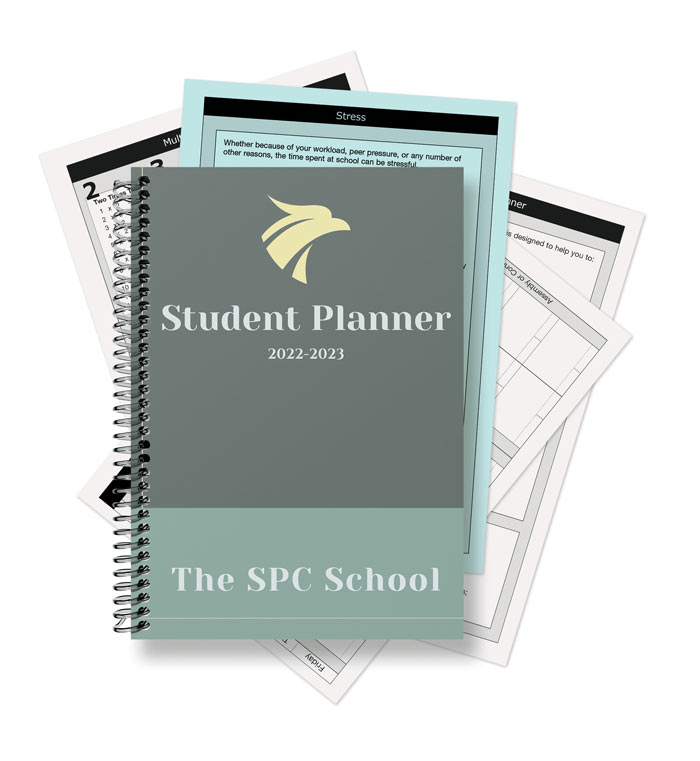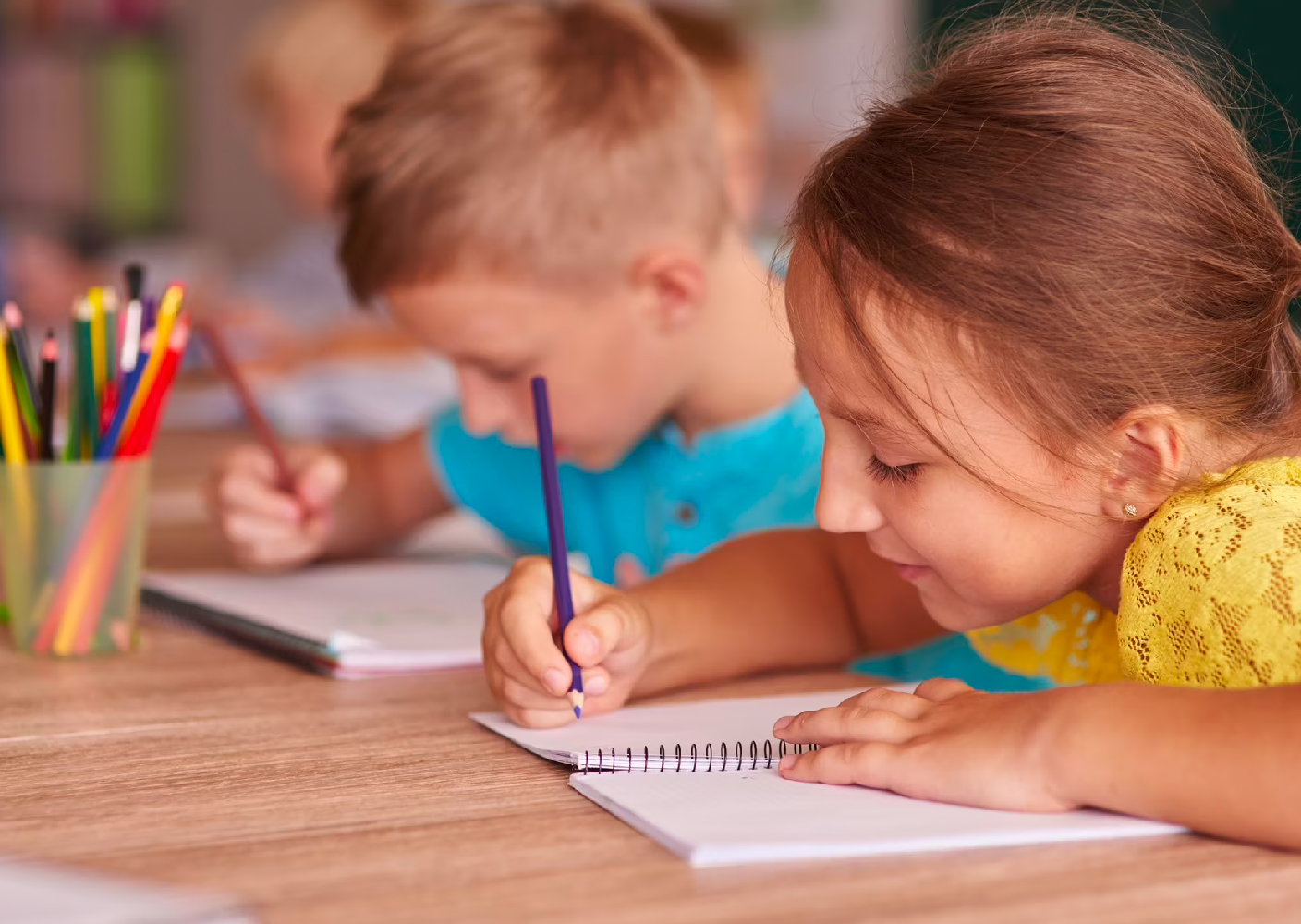What is a student planner?
A student planner (or academic diary) is a journal and planning tool that helps students stay organized. Like the planners many adults use, school planners provide a space for students to organize their schedule and keep track of coursework. Planners usually include layouts by month, week, and often by day.
What is the difference between paper planners and digital planners?
Printed planners and digital planners share the same purpose, but are used and displayed through different mediums. Paper planners can be customized and designed to meet specific needs, but are then printed and stay consistent. Everything you need to stay organized will be printed on paper and bound together in a convenient, durable booklet.
You input information in traditional ways such as writing or drawing. Digital planners are accessed on phones, computers, tablets, or other devices through apps and websites. They function like a traditional planner, but the features are all on-screen. You input information digitally by typing, using touch-screen features, using a stylus, or other digital accessories.

Paper planners can be customized and designed to meet specific needs, but are then printed and stay consistent. Everything you need to stay organized will be printed on paper and bound together in a convenient, durable booklet.
Why should students use paper planners instead of digital planners?
Here are three ways custom, pre-printed planners give students an edge in flexibility, memory, and convenience.
1) Flexibility:
Pre-printed paper planners offer a flexibility and equity that digital planners do not provide. The important tasks associated with planners such as time-management, goal setting and tracking, and parent communication are all crucial components to student success. It is essential to minimize the potential for errors when planning. Relying on digital devices can lead to issues that printed planners overcome.
Digital planners are typically dependent on access to a device and a stable internet connection. Technology is not always reliable, and an app crash, internet outage, or device malfunction could keep a student from accessing their assignments and notes. Additionally, not all families can afford to provide technology access to their children. According to USA Facts, 4.4 million US households with children don’t have access to at-home devices for learning. Even when the device is provided by schools, internet access can still be an issue. Providing all students with custom, pre-printed student planners can eliminate this inequity and offer a reliable alternative.


2) Kinesthetic Benefits:
What does kinesthetic mean, you might be wondering? Kinesthetic learning is a learning style in which knowledge is gained and retained through physically touching and manipulating materials. This can look like using manipulatives to solve a math problem, creating visuals and charts, or simply taking notes. Kinesthetic learning is used often in schools for a very good reason. Research shows that writing things down on physical paper can lead to a higher level of brain activity and improved memory when compared to digital note taking.
Annotating, or physically interacting with text, can also improve both the comprehension and recall of information. Printed planners provide unique opportunities for kinesthetic learning, annotation, and customization. Here are a few ways that students can interact with their printed planners.
Printed planners provide unique opportunities for kinesthetic learning, annotation, and customization
Creating lists & crossing off tasks: Custom, pre-printed student planners serve as the perfect vessel for an all in-one organizational hub. Whether it’s a list of assignments, a goal tracker, a timeline of events, or a to-do list, students can stay organized in their planners. The act of physically writing these things down will help them to remember their pending tasks and stay on track. A bonus is the dopamine boost students will get when they feel the success and pride of crossing off tasks, ultimately increasing their motivation.
Highlighting and annotating: Highlighting, annotating, and marking text all have similar kinesthetic benefits to physically writing something down. The more you interact with a piece of text or information, the more likely you are to remember it. Students can also take advantage of color-coded marking and annotating to organize information in a fun and aesthetic way.
Flipping through pages: With a paper planner, you can open to any desired page in seconds with ease. You can also tab or dogear important pages to access within seconds. This can come in handy when looking to the future to plan for important dates or looking pack to see progress on goals and assignments. On a digital planner, it may take much longer to swipe to the correct page or find the content you are looking for.
Customizing with stickers and colors: As with any type of learning, planning should be fun for students! Printed planners allow for unique stationary tools to be used such as stickers, decorative tape, stamps, and gel pens. While this is not a necessary aspect of planning, it does provide a unique sense of ownership to students that digital planners don’t provide. When a student feels joy at the aesthetics of their planner, they will feel more inclined to use it consistently.
3) Convenience:
Whether printed or digital, planners are a foundational necessity to student success. Goal setting, parent communication, behavior tracking, organization, and time-management often heavily depend on the implementation of planners. Some- thing as crucial as a planner needs to be as convenient and accessible as possible. Here are a few of the ways that paper planners prove to be more convenient than digital planners.

Time: Technology can be time consuming with burdens like logging into devices, opening the app, correcting typos, overcoming technical difficulties, and waiting for devices to load or buffer. Time is everything in the classroom, and paper planners are simple, efficient, quick fixes.
Size: Paper planners are durable, lightweight, and conveniently sized. Students can store them with ease, not having to worry about their weight, safety, or placement in their backpack.
Charge: If a device runs out of power, a digital planner can’t be accessed. Printed planners can be accessed at any time with no limitations.
Whether printed or digital, planners are a foundational necessity to student success. Goal setting, parent communication, behavior tracking, organization, and time-management often heavily depend on the implementation of planners.
How can my school provide students with custom printed planners?
Custom printed student planners will always be a reliable, effective, and powerful organizational tool for students. They are more flexible, convenient, and beneficial than digital planners and enable students to stay organized and thrive! If you are a district leader or school administrator looking to provide students with custom printed planners, your best bet is to use a trusted school planner company like Mimeo Schools.